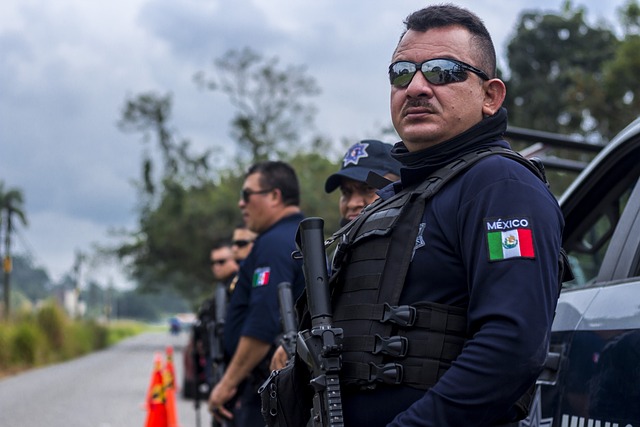Executive protection for high-stakes events is a collaborative, multi-layered strategy involving event organizers, local law enforcement, and security specialists. It encompasses risk assessment, access control, advanced surveillance, secure communication, and tailored response plans to safeguard VIPs and public figures during large gatherings. Effective coordination, open dialogue, and integration of technology are key to creating a comprehensive security framework that addresses crowd control, breaches, and terrorist risks, ensuring the safety and seamless experience of all attendees.
Ensuring the safety and security of high-stake events is paramount, necessitating close coordination with event organizers and local law enforcement. This comprehensive guide delves into the essential practices of executive protection for high-stake events. From understanding the unique challenges to developing robust security plans, we explore the critical roles of all stakeholders. Learn how effective communication strategies facilitate seamless collaboration, ultimately enhancing security measures and ensuring a successful event.
Understanding Executive Protection for High-Stake Events
Executive Protection for high-stake events involves a comprehensive strategy to safeguard key individuals, often public figures or VIPs, from potential threats. It’s a critical aspect of event security planning, especially when managing large gatherings that attract significant attention and draw high-profile attendees. The primary goal is to mitigate risks and ensure the safety of these individuals throughout the event, encompassing both physical protection and crisis management.
Event organizers and local law enforcement play pivotal roles in executing effective executive protection plans. They collaborate to assess potential vulnerabilities, implement access control measures, and deploy trained security personnel equipped with specialized skills. By integrating advanced surveillance technology, secure communication channels, and efficient response protocols, they create a robust framework that addresses diverse scenarios, from accidental incidents to deliberate assaults.
The Role of Event Organizers in Security Coordination
Event organizers play a pivotal role in ensuring the safety and security of high-stakes events, often requiring extensive coordination with various stakeholders, including local law enforcement and executive protection specialists. They are responsible for creating comprehensive security plans tailored to their specific event needs, ranging from large-scale conferences to exclusive celebrity gatherings.
Effective coordination involves clear communication channels, early engagement with relevant authorities, and meticulous risk assessments. Event organizers must proactively identify potential threats, such as crowd control challenges, security breaches, or even terrorist risks. By involving experienced professionals in executive protection for high-stakes events, they can access specialized knowledge and resources to mitigate these risks, ensuring a seamless and secure experience for all attendees.
Engaging Local Law Enforcement for Enhanced Security Measures
Engaging local law enforcement is a strategic move for event organizers aiming to provide top-notch security, especially for high-stakes events that require executive protection. Their expertise and resources are invaluable in ensuring the safety of attendees, guests, and VIPs. Law enforcement agencies can offer specialized training, access to advanced technology, and tactical support tailored to the unique needs of each event.
By establishing open lines of communication with local police departments, organizers can benefit from their intelligence network, allowing them to anticipate potential risks and plan accordingly. This collaboration facilitates a comprehensive security strategy, enhancing the overall safety and success of high-profile events.
Developing a Comprehensive Security Plan: Key Components
Developing a comprehensive security plan is paramount for successful event management, especially for high-stakes events that require top-tier executive protection. The strategy should encompass multiple layers to mitigate risks effectively. Initially, assess the event’s unique vulnerabilities and potential threats. Identify high-value targets, be it prominent speakers, VIPs, or critical infrastructure, and tailor security measures accordingly. This involves deploying close protection teams for personal security and ensuring robust access control mechanisms at event entrances.
A robust plan also includes integrating local law enforcement agencies for broader operational support. Collaborating with these professionals enables the establishment of a coordinated response to any incidents, enhancing overall safety. Additionally, implementing state-of-the-art surveillance technology and advanced communication systems allows for real-time monitoring and swift decision-making. Such measures significantly contribute to creating a secure environment, ensuring the well-being of attendees and high-profile individuals at these high-stakes events.
Effective Communication Strategies for Seamless Collaboration
Effective communication is paramount for seamless collaboration between event organizers, local law enforcement, and executive protection teams handling high-stakes events. Establishing clear, consistent channels from the initial planning stages ensures everyone is aligned on security protocols, emergency procedures, and risk mitigation strategies. Regular meetings, detailed briefings, and accessible digital platforms facilitate open dialogue. This proactive approach minimizes misunderstandings, enhances situational awareness, and allows for rapid response during unforeseen circumstances.
Utilizing a centralized communication hub, such as a secure messaging app or dedicated event management software, enables real-time updates and instant dissemination of critical information. Everyone involved must be adept at using these tools, ensuring timely notifications about changes in plans, potential threats, or evolving security considerations. Effective communication fosters trust, enhances coordination, and ultimately contributes to the successful execution of high-profile events with robust executive protection measures in place.
Ensuring the safety and security of high-stake events requires a coordinated effort between event organizers, local law enforcement, and executive protection specialists. By implementing robust communication strategies and developing comprehensive security plans, these stakeholders can mitigate risks effectively. Collaboration is key to achieving optimal event security, fostering an environment where everyone’s unique expertise contributes to the overall success and safety of the occasion. This holistic approach to executive protection for high-stake events guarantees a seamless experience for all involved.
